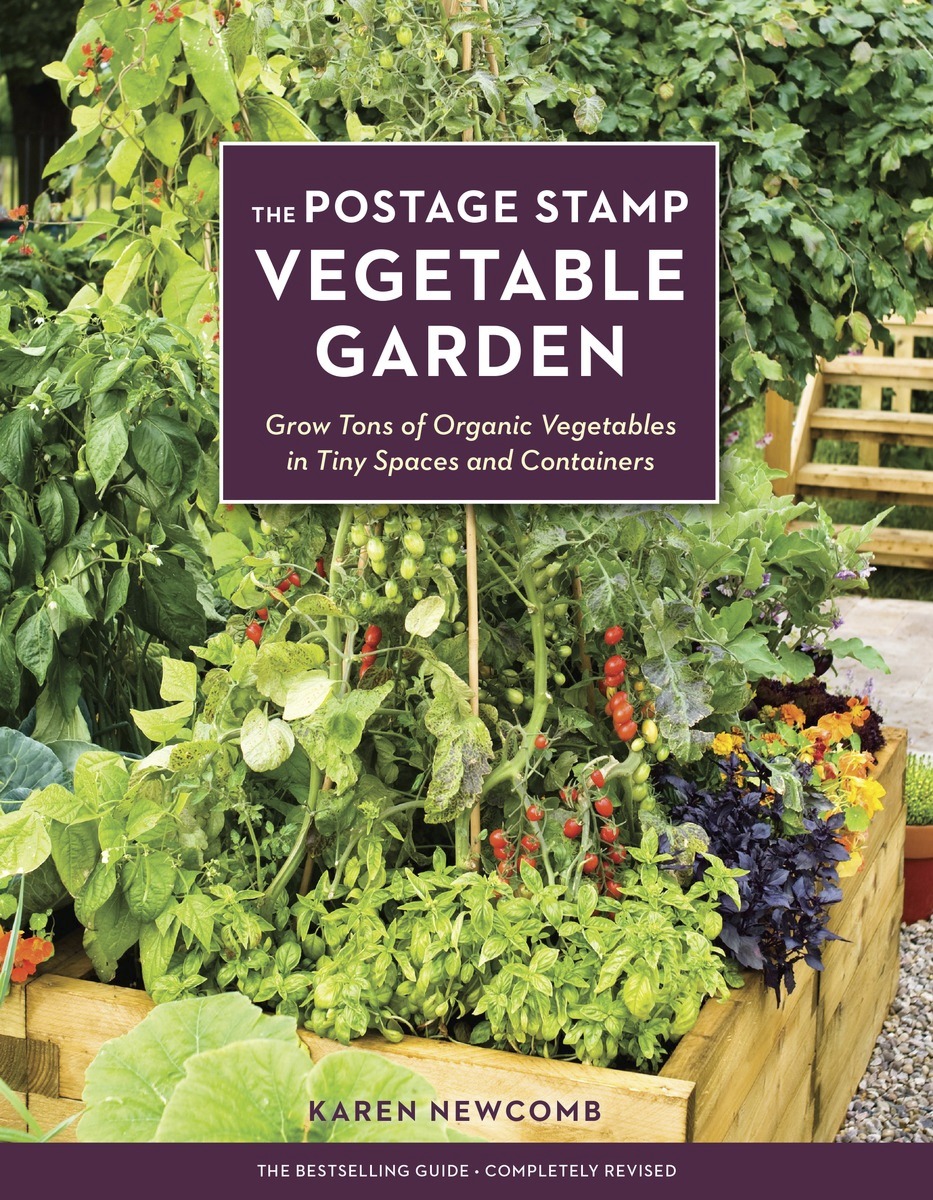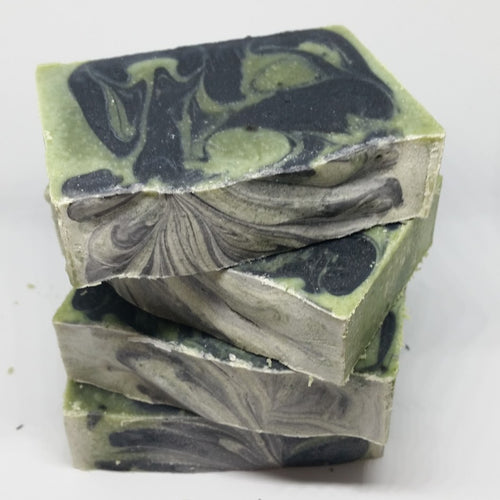A Postage Stamp Garden - book review
Have you thought about growing vegetables but don’t know where to start? Does it all seem like too much work? What about trying a “postage stamp” garden? This is a system described in Karen Newcomb’s recently revised book The Postage Stamp Vegetable Garden: Grow Tons of Organic Vegetables in Tiny Spaces and Containers . This book starts from the very beginning, planning your garden, and explains how to set up the soil to create a productive garden in a small space. The concept is that with the right plant selection, good soil and minimal labour, a small space can be just as, if not more, productive than a larger garden.
. This book starts from the very beginning, planning your garden, and explains how to set up the soil to create a productive garden in a small space. The concept is that with the right plant selection, good soil and minimal labour, a small space can be just as, if not more, productive than a larger garden.
This book seems ideal for beginner gardeners who don’t know where to start, and those with more experience who would like to reduce their workload by using some clever techniques. The principles of postage stamp gardening are:
This book was first published in 1975, but has now been updated and revised. I imagine that these ideas were quite different from traditional gardening at the time, especially with the excitement over chemical fertiliser and pesticides back then. I’m pleased that the book has been released again, now with a detailed chapter on heritage vegetables for small spaces, as its still has much to offer today’s vegetable growers, and there are surely many more growers who are interested in using organic techniques.
I already have an established vegetable garden and by trial and error, I have come to use many of the methods of postage stamp gardening (see posts about my garden here), I have a garden to plan at our new property, so its useful to consider what has worked for me in our climate. Even though we have eight acres (and 258 acres at the new property), our garden is not huge. It consists of four beds, which are mounded up about a foot high, but with no permanent edging. Each bed is about 2 metres by 3 metres. This is larger than the gardens recommended for postage stamp vegetable gardening, and I do find that at times I can only really manage half the space and I let the rest go a bit wild, and it is very sensible to start small until you know what you can handle. The garden area is completely enclosed in a 1 metre high chicken mesh fence. This keeps out the chickens, rabbits, wallabies and bandicoots.
To be honest, I’m think it was just good luck that we ended up putting this garden in a sensible position. Its on a southern slope and probably doesn’t get as much sun as it could, but in our climate a bit of late afternoon shade in summer is a good thing as it lets the garden cool down! With the next garden we will take more time to observe the sun position and make sure we choose the best location. We haven’t decided if we will use raised beds this time, but so far the in-ground beds seem to work ok. I use a lot of large pots as well, so that I can move plants around to suit the season, which is also discussed in the book.
When we first developed the garden I picked up manure from our paddocks by the barrow-load and dumped it on the garden area. We dug up all the grass and then Pete ran over the whole area with a rototiller. We then heaped the soil up into the four beds. I maintain the soil with manure, mulch and compost, mostly collected from our own property. I also use wood ash and some purchased minerals. We have not needed to till the garden again, and as long as I keep up the organic matter in some form, we see good results. There is an odd comment in the book about not using steer manure "because of the salt content", I’m not sure if this is referring to feedlot manure, my whole garden is built on manure from our steers!
The book also includes a chapter on climate and knowing when to plant. This is very useful for new gardeners as often the instructions in books or seed packets are misleading and can result in disappointment. It really is important to consider your specific climate when deciding when to plant and this book tells you how to do that.
The chapter on water got me thinking about how we water. It suggests to water for 1-2 hours to get water right down to 3 feet, but then not water again until the soil is dry at 10 inches. We currently water every day or at least every other day because we use our grey water on the garden. Sometimes we top up with our tank water for 30 minutes or so, but I don’t like to use too much water. I think we might we watering too often and not enough volume. Lately I have been experimenting with watering into pipes that I’ve driven deep into the soil. I agree that its important to water deeply and this is something that I still need to perfect in our garden.
Whether you are new to vegetable gardening or want to know how to get more out of your existing garden (with less work), there is plenty of detail in this book to get you started. There is also more information on Karen’s website.
Do you garden in a small space? Any tips to share?
P.S I have included Amazon affiliate links to the book, if you buy anything through these links I get a small percentage to support my book habit and you don't pay any extra, thanks for supporting my blog!
PPS Image Reprinted with permission from The Postage Stamp Vegetable Garden by Karen Newcomb, copyright (c) 2015. Published by Ten Speed Press, a division of Penguin Random House, Inc. They sent me the book for review.
 |
| see below for image source |
This book seems ideal for beginner gardeners who don’t know where to start, and those with more experience who would like to reduce their workload by using some clever techniques. The principles of postage stamp gardening are:
- Start with productive soil
- Plant vegetables closely – you fit more in and its better for the soil
- Utilise crop-stretching techniques
- Water deeply regularly but infrequently
- Use organic methods to keep your plants healthy
This book was first published in 1975, but has now been updated and revised. I imagine that these ideas were quite different from traditional gardening at the time, especially with the excitement over chemical fertiliser and pesticides back then. I’m pleased that the book has been released again, now with a detailed chapter on heritage vegetables for small spaces, as its still has much to offer today’s vegetable growers, and there are surely many more growers who are interested in using organic techniques.
I already have an established vegetable garden and by trial and error, I have come to use many of the methods of postage stamp gardening (see posts about my garden here), I have a garden to plan at our new property, so its useful to consider what has worked for me in our climate. Even though we have eight acres (and 258 acres at the new property), our garden is not huge. It consists of four beds, which are mounded up about a foot high, but with no permanent edging. Each bed is about 2 metres by 3 metres. This is larger than the gardens recommended for postage stamp vegetable gardening, and I do find that at times I can only really manage half the space and I let the rest go a bit wild, and it is very sensible to start small until you know what you can handle. The garden area is completely enclosed in a 1 metre high chicken mesh fence. This keeps out the chickens, rabbits, wallabies and bandicoots.
| my vege garden (a bit bigger than a postage stamp) |
To be honest, I’m think it was just good luck that we ended up putting this garden in a sensible position. Its on a southern slope and probably doesn’t get as much sun as it could, but in our climate a bit of late afternoon shade in summer is a good thing as it lets the garden cool down! With the next garden we will take more time to observe the sun position and make sure we choose the best location. We haven’t decided if we will use raised beds this time, but so far the in-ground beds seem to work ok. I use a lot of large pots as well, so that I can move plants around to suit the season, which is also discussed in the book.
When we first developed the garden I picked up manure from our paddocks by the barrow-load and dumped it on the garden area. We dug up all the grass and then Pete ran over the whole area with a rototiller. We then heaped the soil up into the four beds. I maintain the soil with manure, mulch and compost, mostly collected from our own property. I also use wood ash and some purchased minerals. We have not needed to till the garden again, and as long as I keep up the organic matter in some form, we see good results. There is an odd comment in the book about not using steer manure "because of the salt content", I’m not sure if this is referring to feedlot manure, my whole garden is built on manure from our steers!
| Strawberries in pots and the massive choko climbing up the fence - making good use of the space |
The book also includes a chapter on climate and knowing when to plant. This is very useful for new gardeners as often the instructions in books or seed packets are misleading and can result in disappointment. It really is important to consider your specific climate when deciding when to plant and this book tells you how to do that.
The chapter on water got me thinking about how we water. It suggests to water for 1-2 hours to get water right down to 3 feet, but then not water again until the soil is dry at 10 inches. We currently water every day or at least every other day because we use our grey water on the garden. Sometimes we top up with our tank water for 30 minutes or so, but I don’t like to use too much water. I think we might we watering too often and not enough volume. Lately I have been experimenting with watering into pipes that I’ve driven deep into the soil. I agree that its important to water deeply and this is something that I still need to perfect in our garden.
Whether you are new to vegetable gardening or want to know how to get more out of your existing garden (with less work), there is plenty of detail in this book to get you started. There is also more information on Karen’s website.
Do you garden in a small space? Any tips to share?
P.S I have included Amazon affiliate links to the book, if you buy anything through these links I get a small percentage to support my book habit and you don't pay any extra, thanks for supporting my blog!
PPS Image Reprinted with permission from The Postage Stamp Vegetable Garden by Karen Newcomb, copyright (c) 2015. Published by Ten Speed Press, a division of Penguin Random House, Inc. They sent me the book for review.

























Leave a comment